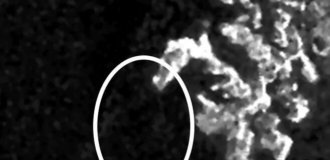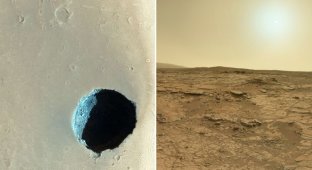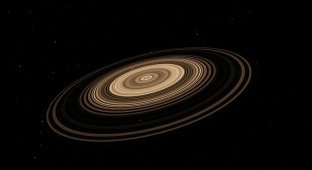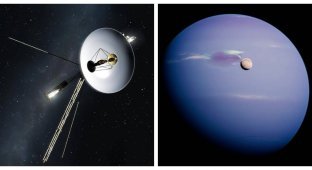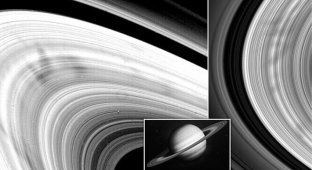5 mysteries of the solar system that science still cannot explain (5 photos)
Where do honeycombs come from on gas giants, why Uranus lies on its side and where did the sister of our star go.
1. Why there is a giant hexagon sticking out at the pole of Saturn 
Most atmospheric planets have winds and cyclones, but on gas giants they are most impressive. And mysterious. For example, At the north pole of Saturn, a huge cyclone revolves 300 km. But unlike normal, self-respecting round hurricanes Saturnian has a hexagonal shape. And no one can understand Why.
Each side of the Saturn hexagon has a length 14,500 km, and you can easily fit our entire Earth into it. But better not worth it.
Saturn is not the only gas giant with such a strange weather phenomenon. For example, around the poles of Jupiter constantly arise not so big but more numerous hexagonal storms, honeycomb-like.
Several hypotheses have been put forward as to why this might take place. There is a possibility that due to the interaction of cyclones and anticyclones. Or the magnetic fields of the giant planets affect the winds differently than as we assumed earlier. But until now, the mechanism of the appearance of giant hexagons is unclear.
2 Why Uranus Doesn't Rotate Wrong 
All decent planets rotate around their axis, as tops. Some are faster, others are slower, but in general things are quite predictable. But not in the case of Uranus: it spins under an angle of 99° to the plane of its orbit, so that it resembles a rolling ball.
No other planet in our system behaves like this.
This is usually associated with the fact that during the formation solar system Uranus collided with some other protoplanet and its overturned. However, this theory does not explain why none of his numerous moons does not have the same inclined orbit.
It is also possible that Uranus once rotated as usual, and then it was shaken and gradually tilted by some large satellite, which subsequently flew into the depths of space and was lost.
Or maybe there is another option, but scientists only to be found. But it won't be easy: Uranus is far away, and the last one, who visited it was Voyager 2 in 1986.
Because of the rotation angle confusion, scientists are also not quite sure which pole of Uranus to call north and which south.
3. Why one of Saturn's moons is shaped like a walnut 
Saturn has a lot of satellites, and among them there are a lot of remarkable celestial bodies. One of these is Iapetus, consisting of a water ice. It is the most distant in the Saturn system and is divided into two hemispheres: black as soot, and white, shining like fresh snow.
The most important attraction of Iapetus is a huge mountain ridge, located almost exactly on the equator. Its highest point reaches 20 km, which is more than twice the height of Everest.
A long ridge actually divides the entire satellite in two, which is why Iapetus resembles a walnut.
It is still not clear why he looks like this. are being put forward assumptions that once Iapetus had a moon (the satellite of the satellite - great!), which fell on him and formed a backbone.
Another theory is that Iapetus once had rings (rings moon of the planet with rings - that's even cooler!), and then they collapsed and created these mountains. Or the comb turned out naturally from ice and does it look more like a wall from Game of Thrones than ordinary mountains? For now it remains only to speculate.
4. Why Neptune radiates more heat than it receives from the Sun 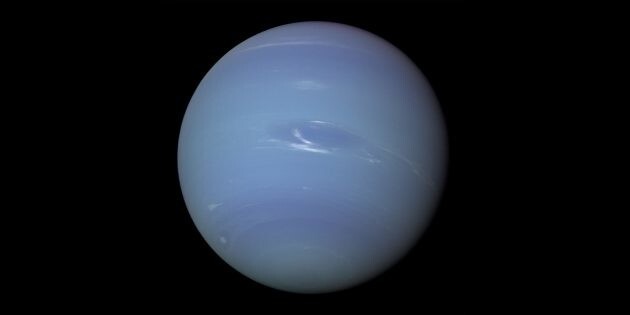
Neptune is the most distant planet from the Sun in our system. To say that it is cold there is to say nothing. The temperature in the upper layers of its atmosphere is −221.3 °C.
Despite this, winds and hurricanes rage on Neptune, which can only be explained by the presence of an internal source of thermal energy. Indeed, the ice giant, despite its name, manages to emit heat - 2.6 times more than it receives from sunbeams.
Scientists don't know exactly where Neptune's internal energy comes from.
Perhaps in the bowels of the planet there are some radioactive substances that heat it up. Or is Neptune influenced by some unaccounted for interaction of gravitational waves and the atmosphere over the tropopause.
But the coolest theory is that from the methane in the upper layers atmospherehydrocarbons are released, which are then under pressure turn into diamonds. Rain from them all the time falls into the lower dense layers of the planet's atmosphere, and the friction of precipitation creates heat.
But for now, we cannot look into the bowels of Neptune.
5. Did the Sun ever have a twin star? 
On the Internet, you can find theories that every 26 million years on our planet there is a mass extinction.
It allegedly happens because on the outskirts of the Solar system dangles the second star - Nemesis. dim brown dwarf, which sends radioactive rays, asteroids and other misfortune. We have already mentioned this myth and said that nothing there is no such thing in our system.
But this does not mean that our luminary could not have had a companion star before.
A group of astrophysicists from Harvard investigated the structure of the Cloud Oorta - many small cosmic bodies flying on distant borders solar system. And found that its "population" is much more more than one would expect.
Scientists have suggested that the Sun could hardly attract so much rocky and icy debris alone. And so, billions of years ago, at the dawn of the formation of the system, our star could have a luminous companion.
Paired and even triple stars in space are not uncommon. More Moreover, they are extremely common. It is likely that the Sun was born by a binary star from a dense molecular cloud, and then the gravitational influence of passing luminaries threw the nameless twin away into the depths of space. This would explain well some structural features of our system.
Astrophysicists calculated that the twin star was practically the same mass as the Sun, and rotated at a distance 1000 astronomical units from it. But since we separated from her, 4.5 billion years have passed. The sun has made at least a dozen revolutions around the center of the Milky Way galaxy, and all orbits are mixed up so that the former neighbor can no longer be found.
By the way, if you looked from the surface of the Earth at that a star when she was still with us, she would not seem second to you The sun, but rather a bright point. Approximately as it is now seen in the evening Jupiter.










